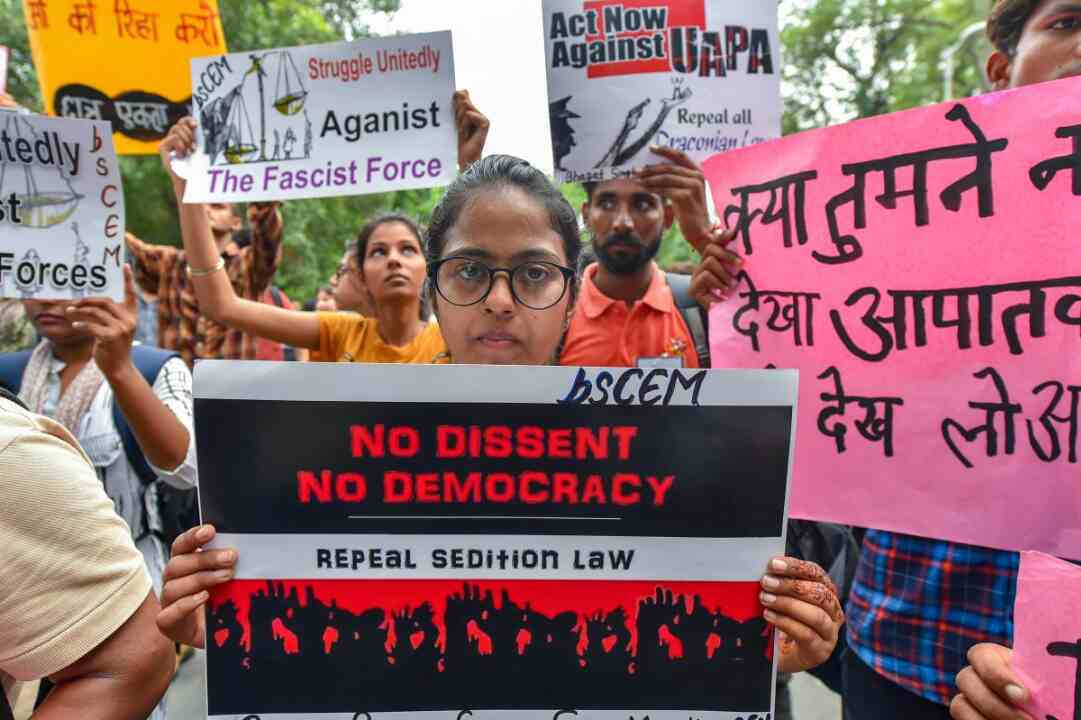Change is the only constant

It is reassuring that the Supreme Court has once again decided to stand for the fundamental right of free speech of the citizens. The Court came down harshly on the Central government saying that it is prima facie convinced that sedition laws are misused by authorities. The court has asked the government to come with its response by the next hearing on the matter. The gravity of the issue can be gauged from the fact that the apex court indicated to touch the threshold by using its judicial review powers, getting somewhat in the business of executive domain. This could also be seen as an act that seeks to check the power of the executive pillar. Power is what seems to be at the centre of the debate. Right since its inception in 1870 in the Indian Penal Code, sedition law has served as the powerhouse for Central leaderships — initially for our colonial masters and subsequently for our very own elected representatives — to adopt a high-handed approach towards dissenters of the state power. Power is not easily forgone in politics but balancing and decentralisation of power remain the foundational notion in a democratic system. The choice is as clear before us but it is tough to make. Two things may have provoked the Supreme Court to make such an extreme observation. First, the cases of sedition have increased disproportionately over the past few years and second, society has gone through a significant shift on parameters of education, political awareness etc. On the number of cases, the government's data from National Crime Records Bureau suggest that the number of sedition cases has increased by 165 per cent between 2016 to 2019. This simply means that the number of cases in 2019 had gone well beyond doubling and is nearing tripling in comparison to 2016. The conviction rate remains as low as 3.3 per cent. So, of the hundred people charged under Section 124 A, charges have been proved only in 3-4 cases. The remaining accused in the 96 cases have been no more than scapegoats, going through rigorous legal proceedings and incurring heavy legal costs. The cost goes beyond estimation in the case of students who lose the crucial years of their grooming. The instances of the use of sedition charges need no recollection; it is being used more frequently these days. Even as the Supreme Court made its observation, sedition laws were imposed against a group of farmers in Haryana for damaging the vehicle of a BJP politician. It remains a question whether sedition was the only and most appropriate law to be imposed in the case? Certainly not. On the second aspect of increased political awareness, the constitutionality of the sedition laws has been repeatedly challenged in front of courts. Right from senior journalists to activists have challenged the constitutionality of the law.
Also, the law is grossly misunderstood in large parts of India where it is commonly known by the name of deshdroh kanoon. This misnomer makes a great difference as it implies enmity against the country. The connotation of the term sets in a wrong perception among the masses and shapes the public discourse in a wrong direction. In a country like India which is going through a rising 'nationalistic sentiment', anything that apparently compromises with the nation's integrity doesn't even require a debate, no matter what the cost has to be paid against it. There is perhaps a lot in the name! It is a communication in itself. While dilution and scrapping of the law cannot be ascertained in a single go, the communication around the matter needs to be magnified, making the nation more ready to decide on the fate of the law. The Supreme Court's observation will certainly give weight to the arguments against the colonial law. The Court this time has straightway emphasised the quashing of the law — a dramatic shift from the earlier versions. As we know, the 1962 Kedarnath case is considered a landmark in this direction. The judgement had upheld the sedition laws but diluted the grounds on which accused could be charged. The Supreme Court's observation indicates a shift from the stand. It questions the very relevance of sedition law in the present age. It will be interesting to see the Centre's response on the matter. The questions of power are not so easy to be solved. Parties in power have for long refrained from the question of forgoing the immense power provided under the law. The Central government has the opportunity to break the chain and set an example by bringing the much-needed transformation in the legal system. Law is itself evolutionary by nature. It has to change with time. The Supreme Court has initiated the process of change and the executive should show intent and vigour to come to a meaningful solution. Stretching the process unnecessarily would be a regressive step. It is imperative to understand the changes demanded by time and respond accordingly.



